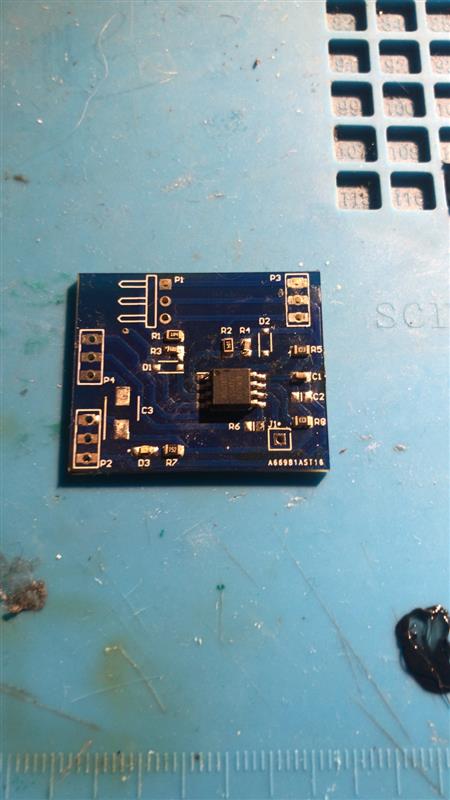-
- PCB TYPE
- PRINTED CIRCUIT BOARD PROTOTYPE ALUMINUM PRINTED CIRCUIT BOARD R&F PCB FPC HIGH FREQUENCY PCB HIGH-TG PCB HEAVY COPPER PCB HDI PCB PCB FOR LIGHTING METAL CORE PCB
time:Jul 19. 2021, 17:04:28 Views:130
Based on the physical and chemical properties of the high-frequency sheet, its processing technology is different from the traditional FR4 process. If it is processed under the same conditions as the conventional epoxy resin glass fiber copper clad laminate, no qualified product can be obtained.
(1) Drilling: The base material is soft, and the number of drilled stacked plates is small. Usually 0.8mm plate thickness is suitable for two sheets and one stack; the speed should be slower; to use a new drill bit, the top angle and thread angle of the drill bit have their own characteristics. special request.
(2) Solder resist printing: After the board is etched, the board cannot be polished with a roller brush before the solder resist green oil is printed, so as not to damage the substrate. It is recommended to use chemical methods for surface treatment. To achieve this: without grinding the board, after printing the solder mask, the circuit and the copper surface are uniform and there is no oxide layer, which is by no means easy.
(3) Hot air leveling: Based on the inherent properties of fluororesin, the rapid heating of the sheet should be avoided as much as possible. Before spraying tin, it should be preheated at 150°C for about 30 minutes, and then spray tin immediately. The temperature of the tin tank should not exceed 245℃, otherwise the adhesion of the isolated pad will be affected.
(4) Milling profile: Fluorine resin is soft, the general milling cutter has a lot of burrs, and it is not flat. It needs to be milled with a suitable special milling cutter.

(5) Transport between processes: It cannot be placed vertically, it can only be placed in the basket flat with paper, and no finger is allowed to touch the circuit pattern in the board during the whole process. The whole process prevents scratches and scratches. Line scratches, pinholes, indentations, and dents will affect signal transmission, and the board will be rejected.
(6) Etching: Strictly control side etching, sawtooth, and notch, and strictly control the line width tolerance of ±0.02mm. Check with a 100x magnifying glass.
(7) Electroless copper: The pretreatment of electroless copper is a major difficulty in the manufacture of high-frequency boards, and it is also a key step. There are many methods for pretreatment of copper sinking, but in summary, there are two methods that can stabilize the quality and are suitable for mass production:
Method 1: Chemical method: Sodium is added to tetrahydrofuran and other solutions to form a sodium complex, so that the surface atoms of the polytetrafluoroethylene in the pores are eroded to achieve the purpose of wetting the pores. This is a classic and successful method with good results and stable quality, but it is highly toxic, sodium is flammable, and dangerous, and requires special management.
Method 2: Plasma method: Imported special equipment is required. In a vacuum environment, inject carbon tetrafluoride (CF4) or argon (Ar2) nitrogen (N2) and oxygen (O2) gas between the two high-voltage electrodes , The printed board is placed between the two electrodes, and plasma is formed in the cavity, thereby removing the dirt and dirt in the hole. This method can obtain a satisfactory uniform effect, and mass production is feasible.

Got project ready to assembly? Contact us: info@apollopcb.com



We're not around but we still want to hear from you! Leave us a note:

Leave Message to APOLLOPCB
